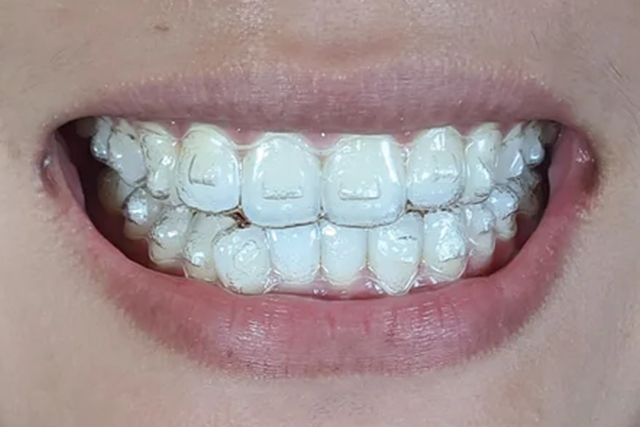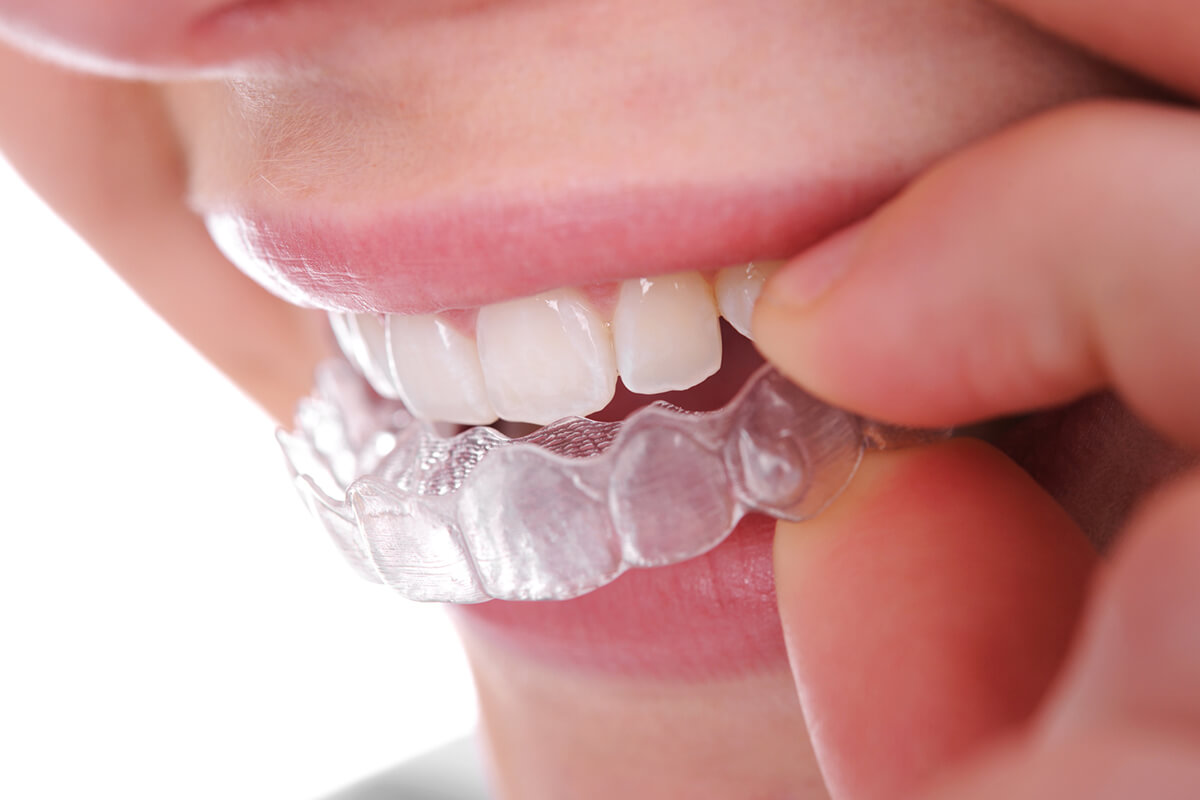Frequently Asked Questions Regarding Invisalign: Everything You Need to Know
Frequently Asked Questions Regarding Invisalign: Everything You Need to Know
Blog Article
Invisalign vs. Standard Dental braces: Which Option Is Right for You?
When thinking about orthodontic therapy, the choice between Invisalign and typical dental braces presents several essential aspects that merit cautious examination. Invisalign provides a discreet alternative with detachable aligners, while standard braces give a much more noticeable yet efficient service for extreme misalignment.
Introduction of Treatment Choices

On the other hand, typical dental braces contain steel brackets and cables that are adhered to the teeth. This method applies continuous pressure over time to achieve alignment. While efficient for complex orthodontic concerns, typical braces call for normal brows through for adjustments and can position challenges in maintaining oral health due to the trouble of cleaning around brackets and cords.
Both alternatives have their advantages, and the option commonly rests on details dental problems, way of living choices, and client compliance. Inevitably, getting in touch with an orthodontic expert is essential for determining the most ideal therapy plan customized to private needs. Recognizing the nuances of each option can considerably influence the overall success of orthodontic therapy.
Visual Considerations
A significant element affecting the option in between Invisalign and conventional dental braces is the aesthetic charm each therapy uses. Invisalign aligners are crafted from clear plastic, making them practically unnoticeable when put on.
On the other hand, typical dental braces contain steel brackets and cords, which can be much more obvious. While improvements in orthodontic innovation have brought about the advancement of smaller brackets and colored elastics, traditional dental braces still maintain a more noticeable profile. For some people, the visibility of dental braces might deter them from looking for necessary therapy.
Eventually, the choice in between Invisalign and conventional dental braces may depend upon personal choices relating to looks. People who focus on discernment frequently favor Invisalign, while those who are much less concerned regarding visibility might select conventional braces. Comprehending the aesthetic implications of each option is critical for making an informed choice that lines up with one's way of life and choices.
Comfort and Convenience

In regards to comfort, Invisalign aligners are detachable, allowing patients to enjoy their preferred foods without restriction and keep optimal dental health. Brushing and flossing are simplified, as the aligners can be obtained throughout these regimens, whereas traditional braces need careful steering around cords and braces.
Additionally, Invisalign's dynamic system enables less orthodontic visits. Patients typically receive multiple collections of aligners at the same time, which can enhance the treatment procedure and reduce time invested in the orthodontist's chair. In contrast, traditional braces demand normal modifications, making them less practical for those with hectic schedules. Invisalign. Generally, the comfort and ease of Invisalign make it an appealing selection for lots of people looking for orthodontic therapy.
Therapy Period and Performance
While both Invisalign and typical dental braces are efficient in remedying oral imbalances, the period of treatment can differ considerably in between the 2 choices. Generally, Invisalign treatment can take anywhere from 12 to 18 months, relying on the intricacy of the situation. The clear aligners function by gradually shifting teeth right into their wanted settings, and routine follow-ups with an orthodontist help make sure progress stays on track.
On the other hand, standard dental braces typically call for a longer dedication, generally varying from 18 months to three years. This is due to their set nature and the usage of braces and cables, which can be much more efficient for complex cases and serious misalignments (Invisalign). The therapy efficiency of traditional braces is well-documented, as they allow for exact changes and better control over tooth activity
Ultimately, the choice in between Invisalign and traditional braces might rest on both the anticipated therapy period and the specific oral concerns available. Consulting with an orthodontist is vital, as they can offer tailored recommendations based upon specific requirements, ensuring the chosen technique lines up with preferred timeframes and end results.
Expense Contrast and Insurance Policy Options
Price plays a significant function in the decision-making procedure for individuals thinking about orthodontic treatment, whether opting for Invisalign or traditional braces. Generally, the expense of Invisalign varieties from $3,000 to $8,000, while standard dental braces normally cost in between $2,000 and $6,000. Aspects affecting these costs include the complexity of the case, the period of therapy, and geographical location.
Insurance policy insurance find out here now coverage can dramatically impact out-of-pocket expenditures. Several oral insurance coverage plans provide partial insurance coverage for orthodontic therapies, but the specifics can differ extensively. It is vital link for individuals to review their insurance plan to establish the level of coverage for either alternative. Typically, typical dental braces may be extra regularly covered by insurance policy strategies compared to Invisalign, which some insurance companies categorize as an aesthetic treatment.
Additionally, numerous orthodontic techniques use flexible layaway plan, making both therapy options more accessible. Clients ought to inquire regarding possible financing choices and discount rates for ahead of time settlements. Evaluating the total expense, including insurance coverage benefits and layaway plan, is important for making an informed choice that lines up with both aesthetic choices and budget factors to consider.

Verdict
In summary, the selection in between Invisalign and typical dental braces rests on multiple factors, consisting of aesthetic preferences, convenience, therapy duration, and cost. Invisalign supplies a very discreet, removable alternative that promotes dental hygiene and nutritional flexibility, while conventional braces may be preferable for intricate dental issues and frequently come with a lower rate factor. Eventually, examination with an orthodontist is necessary to evaluate private situations and establish the most appropriate treatment choice for achieving optimum oral alignment.
When considering orthodontic treatment, the option between Invisalign and conventional Discover More braces presents a number of essential elements that warrant cautious analysis.Comparing Invisalign and standard dental braces exposes distinctive treatment choices for orthodontic correction.While both Invisalign and standard braces are efficient in remedying oral misalignments, the duration of treatment can vary dramatically in between the 2 choices.Cost plays a considerable duty in the decision-making process for people taking into consideration orthodontic therapy, whether deciding for Invisalign or traditional dental braces.In recap, the selection in between Invisalign and typical braces pivots on several elements, consisting of aesthetic choices, convenience, treatment period, and cost.
Report this page